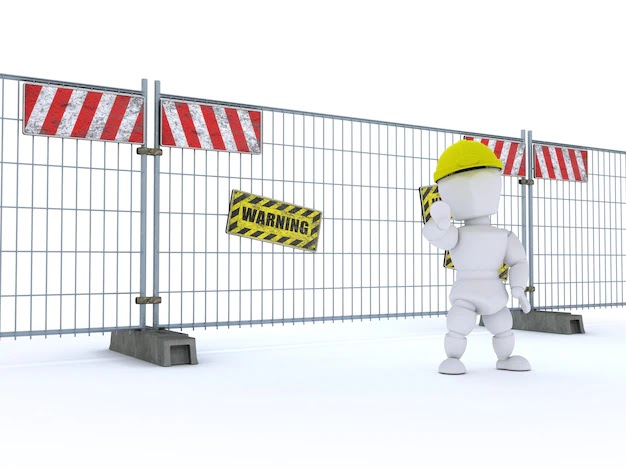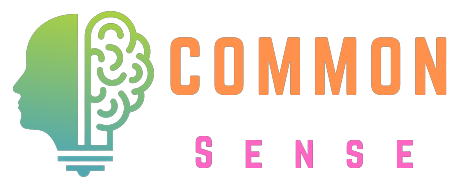
Decision-Making Frameworks
I. Why Decision-Making Frameworks Matter
The decision-making process can be overwhelming, particularly when dealing with complex situations or conflicting information. Frameworks provide a structured approach to:
1. Reduce uncertainty: By clarifying goals and identifying factors influencing outcomes.
2. Enhance objectivity: By minimizing biases and emotional interference.
3. Improve efficiency: By streamlining the process into manageable steps.
4. Support accountability: By providing a clear rationale for the decisions made.
1. The Eisenhower Matrix: The Eisenhower Matrix, also known as the Urgent-Important Matrix, helps prioritize tasks by categorizing them into four quadrants:
a) Urgent and Important: Tasks requiring immediate action.
II. Popular Decision-Making Frameworks
1. The Eisenhower Matrix: The Eisenhower Matrix, also known as the Urgent-Important Matrix, helps prioritize tasks by categorizing them into four quadrants:
a) Urgent and Important: Tasks requiring immediate action.
b) Important but Not Urgent: Tasks for long-term planning.
c) Urgent but Not Important: Tasks that can be delegated.
d) Neither Urgent nor Important: Tasks to eliminate or defer.
This framework is particularly useful for time management and ensuring focus on priorities.
2. SWOT Analysis: SWOT stands for Strengths, Weaknesses, Opportunities, and Threats. It is a strategic tool that evaluates internal and external factors to make informed decisions.
a) Strengths: Internal advantages, such as resources or expertise.
This framework is particularly useful for time management and ensuring focus on priorities.
2. SWOT Analysis: SWOT stands for Strengths, Weaknesses, Opportunities, and Threats. It is a strategic tool that evaluates internal and external factors to make informed decisions.
a) Strengths: Internal advantages, such as resources or expertise.
b) Weaknesses: Internal limitations or challenges.
c) Opportunities: External factors that can be leveraged for success.
d) Threats: External risks that may hinder outcomes.
SWOT analysis is widely used in business planning and personal goal-setting to assess potential risks and benefits.
3. Cost-Benefit Analysis (CBA): CBA involves comparing the costs and benefits of a decision to determine its feasibility. This framework is particularly effective for financial or resource-based decisions. Steps include:
a) Identifying all costs and benefits associated with the decision.
SWOT analysis is widely used in business planning and personal goal-setting to assess potential risks and benefits.
3. Cost-Benefit Analysis (CBA): CBA involves comparing the costs and benefits of a decision to determine its feasibility. This framework is particularly effective for financial or resource-based decisions. Steps include:
a) Identifying all costs and benefits associated with the decision.
b) Assigning monetary or qualitative values to each factor.
c) Comparing total costs and benefits to determine net value.
4. The Decision Matrix: A Decision Matrix is a quantitative tool for comparing multiple options based on predefined criteria. Each option is scored on various factors, and weighted scores are calculated to identify the most suitable choice. This is especially useful for selecting between multiple products, services, or strategies with varying features.
5. Six Thinking Hats: This creative problem-solving tool encourages individuals to analyze a decision from six perspectives:
a) White Hat: Focus on facts and data.
4. The Decision Matrix: A Decision Matrix is a quantitative tool for comparing multiple options based on predefined criteria. Each option is scored on various factors, and weighted scores are calculated to identify the most suitable choice. This is especially useful for selecting between multiple products, services, or strategies with varying features.
5. Six Thinking Hats: This creative problem-solving tool encourages individuals to analyze a decision from six perspectives:
a) White Hat: Focus on facts and data.
b) Red Hat: Consider emotions and intuition.
c) Black Hat: Evaluate risks and potential downsides.
d) Yellow Hat: Highlight benefits and optimism.
e) Green Hat: Explore creative solutions.
f) Blue Hat: Manage the overall process.
The Six Thinking Hats framework fosters balanced thinking and collaboration, reducing biases and blind spots.
6. OODA Loop: Originally developed for military strategy, the OODA Loop—Observe, Orient, Decide, Act—helps make quick, informed decisions in dynamic environments.
a) Observe: Gather information about the situation.
b) Orient: Analyze data and understand its implications.
c) Decide: Choose the best course of action.
d) Act: Implement the decision and assess its impact.
The OODA Loop is particularly useful in fast-paced settings like crisis management or competitive industries.
1. Define the Problem: Clearly articulate the issue at hand, including objectives and constraints.
2. Gather Information: Collect relevant data to understand the context and available options.
3. Apply the Framework: Use a suitable decision-making framework based on the complexity and nature of the problem.
4. Evaluate Alternatives: Compare options systematically to identify the best choice.
5. Implement the Decision: Execute the chosen option with a clear plan.
6. Monitor and Adjust: Assess the outcomes and make necessary adjustments for continuous improvement.
1. Increased Confidence: A structured process reduces doubt and hesitation.
The OODA Loop is particularly useful in fast-paced settings like crisis management or competitive industries.
III. Steps to Implement a Decision-Making Framework
1. Define the Problem: Clearly articulate the issue at hand, including objectives and constraints.
2. Gather Information: Collect relevant data to understand the context and available options.
3. Apply the Framework: Use a suitable decision-making framework based on the complexity and nature of the problem.
4. Evaluate Alternatives: Compare options systematically to identify the best choice.
5. Implement the Decision: Execute the chosen option with a clear plan.
6. Monitor and Adjust: Assess the outcomes and make necessary adjustments for continuous improvement.
IV. Benefits of Using Decision-Making Frameworks
1. Increased Confidence: A structured process reduces doubt and hesitation.
2. Enhanced Collaboration: Frameworks provide a common language for teams, fostering consensus.
3. Better Outcomes: Systematic analysis leads to informed and effective choices.
1. Overcomplication: Choose a framework appropriate for the decision's complexity.
V. Common Pitfalls to Avoid
1. Overcomplication: Choose a framework appropriate for the decision's complexity.
2. Bias in Analysis: Ensure data and perspectives are balanced.
3. Ignoring Context: Tailor the framework to the specific situation rather than following it rigidly.

Decision-making frameworks are invaluable tools for navigating the complexities of modern life. By providing structure, clarity, and objectivity, they empower individuals and teams to make better choices, whether in personal, professional, or social contexts. Embracing these frameworks ensures that decisions are not only well-informed but also aligned with goals and values, leading to long-term success and satisfaction.
Ques 1: What is a decision-making framework?
Ans: A decision-making framework is a structured method or tool that helps individuals or teams evaluate options and make informed decisions. It provides guidelines for analyzing situations, considering various factors, and selecting the best course of action. Common decision-making frameworks include the Eisenhower Matrix, SWOT analysis, and Cost-Benefit Analysis, each tailored for specific decision types.
Ques 2: Why are decision-making frameworks important?
Ans: Decision-making frameworks are important because they help remove uncertainty, reduce bias, and improve the overall quality of decisions. By following a structured approach, individuals can consider all relevant factors, avoid impulsive choices, and make decisions based on data and careful analysis, ultimately leading to better outcomes in both personal and professional settings.
Ques 3: How do I choose the right decision-making framework?
Ans: The right framework depends on the type of decision you're facing. For prioritizing tasks, the Eisenhower Matrix is effective. For strategic planning, SWOT analysis works well. If you're comparing multiple options, a Decision Matrix may be most suitable. Consider the complexity of the decision, the data available, and your goal to guide your framework choice.
Ques 4: Can decision-making frameworks help in a business setting?
Ans: Yes, decision-making frameworks are widely used in business settings. They help business leaders and teams evaluate strategies, identify risks, and determine the best course of action. Frameworks like SWOT analysis and Cost-Benefit Analysis are particularly useful in business planning, budgeting, and risk management.
Ques 5: How can decision-making frameworks improve team collaboration?
Ans: Decision-making frameworks promote collaboration by providing a structured process for teams to follow. They ensure that all perspectives are considered, help prevent biases, and foster consensus. Teams can evaluate options objectively and make decisions based on collective input, which leads to more effective and unified outcomes.

Conclusion
Decision-making frameworks are invaluable tools for navigating the complexities of modern life. By providing structure, clarity, and objectivity, they empower individuals and teams to make better choices, whether in personal, professional, or social contexts. Embracing these frameworks ensures that decisions are not only well-informed but also aligned with goals and values, leading to long-term success and satisfaction.
FAQ
Ques 1: What is a decision-making framework?
Ans: A decision-making framework is a structured method or tool that helps individuals or teams evaluate options and make informed decisions. It provides guidelines for analyzing situations, considering various factors, and selecting the best course of action. Common decision-making frameworks include the Eisenhower Matrix, SWOT analysis, and Cost-Benefit Analysis, each tailored for specific decision types.
Ques 2: Why are decision-making frameworks important?
Ans: Decision-making frameworks are important because they help remove uncertainty, reduce bias, and improve the overall quality of decisions. By following a structured approach, individuals can consider all relevant factors, avoid impulsive choices, and make decisions based on data and careful analysis, ultimately leading to better outcomes in both personal and professional settings.
Ques 3: How do I choose the right decision-making framework?
Ans: The right framework depends on the type of decision you're facing. For prioritizing tasks, the Eisenhower Matrix is effective. For strategic planning, SWOT analysis works well. If you're comparing multiple options, a Decision Matrix may be most suitable. Consider the complexity of the decision, the data available, and your goal to guide your framework choice.
Ques 4: Can decision-making frameworks help in a business setting?
Ans: Yes, decision-making frameworks are widely used in business settings. They help business leaders and teams evaluate strategies, identify risks, and determine the best course of action. Frameworks like SWOT analysis and Cost-Benefit Analysis are particularly useful in business planning, budgeting, and risk management.
Ques 5: How can decision-making frameworks improve team collaboration?
Ans: Decision-making frameworks promote collaboration by providing a structured process for teams to follow. They ensure that all perspectives are considered, help prevent biases, and foster consensus. Teams can evaluate options objectively and make decisions based on collective input, which leads to more effective and unified outcomes.







Do Leave Your Comment